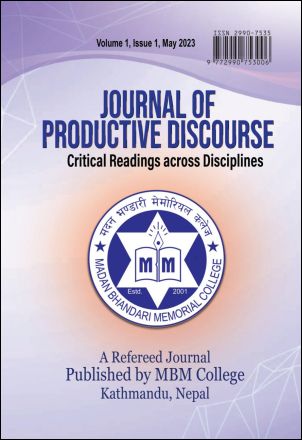Usage and Significance of Manipuri Colour Terms: Taking Cues from Imphal Children
Keywords:
Colour Term, Meiteilon, Derived, Basic ColourAbstract
There are four basic colour terms in Meiteilon or Manipuri. There are also secondary colour terms, which are derived from objects. The associated objects are used with the term ‘mǝcu’, which means colour in Meiteilon. For instance, hǝŋamapalmǝcu is the colour term for yellow where hǝŋamapal means the mustard flower. Thus the yellow colour term is derived from the yellow colour of the mustard flower and is used with mǝcu to give an equivalent term for yellow in English. This paper seeks to explore the colour terms in Meiteilon in their possible forms and terms related to their states and their cultural salience, if any, with a holistic approach. As a pilot survey, the use of Manipuri colour terms in the speeches of 8 children (five 8-year-olds and three 5-yearolds, who lived in a particular locality of Imphal) was observed in their home environment. These children seem to know the colour terms in English well compared to the Manipuri colour terms. The initial observations hint at the diminished use of native terms compared to the use of English equivalents, which is not an ideal situation for the retention of native language at large. It is still to be checked if similar situations are prevalent in other home environments, and if such cases are on the rise then consequences could be far reaching in terms of indigenous languages losing out to English.
Downloads
Downloads
Published
How to Cite
Issue
Section
License
Copyright (c) 2023 Romita Ahanthem Devi

This work is licensed under a Creative Commons Attribution-NonCommercial 4.0 International License.
This license allows reusers to distribute, remix, adapt, and build upon the material in any medium or format for noncommercial purposes only, and only so long as attribution is given to the creator.




